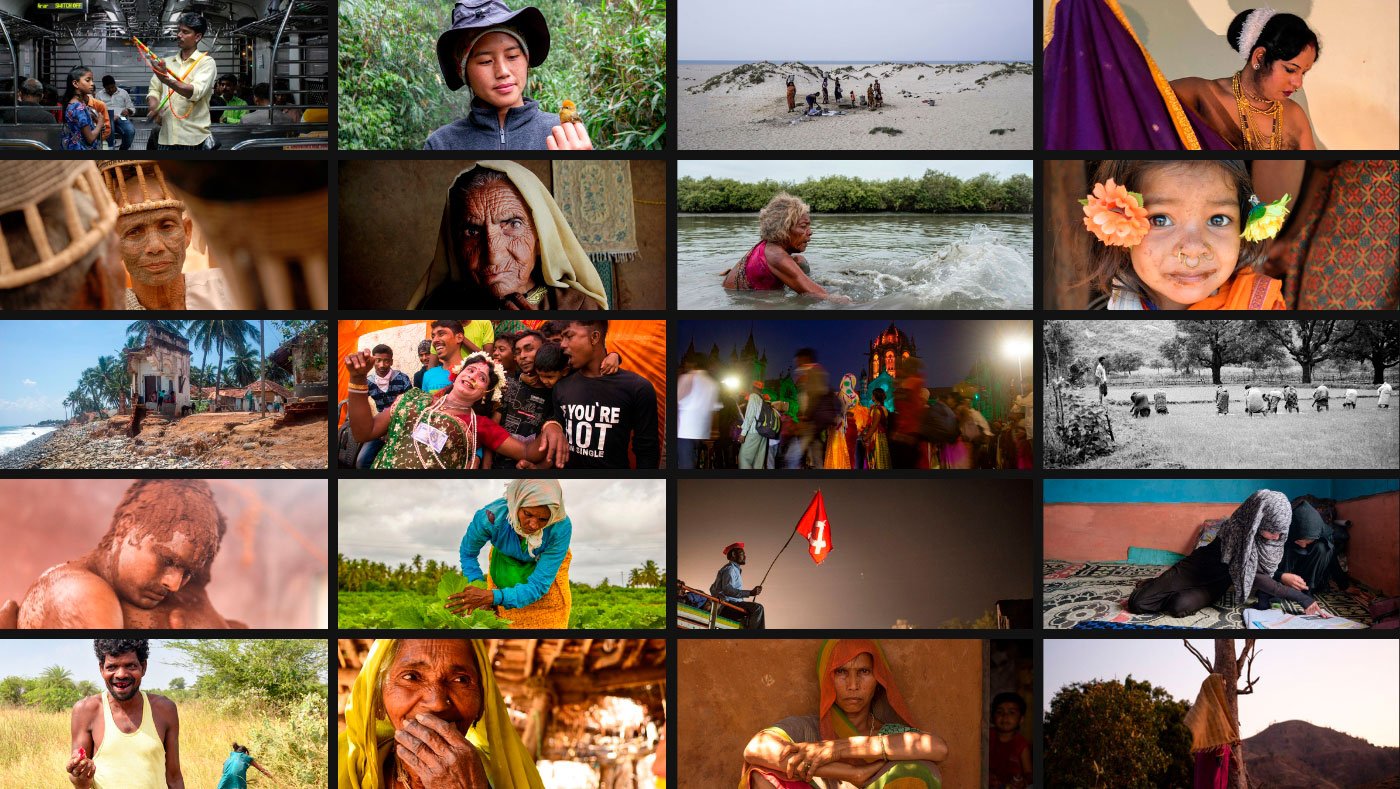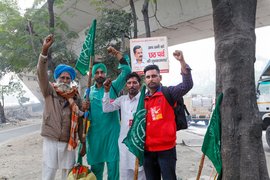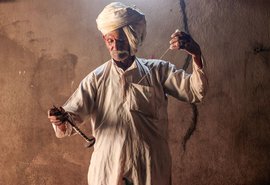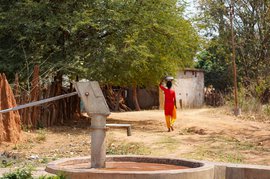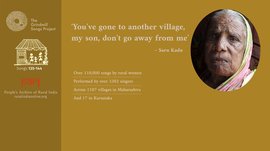“The camera is a lump of metal with a hole in it. The picture is in your heart. It is the intent that determines the content.”
P. Sainath
Bending, balancing, building, heaving, lifting, sweeping, cooking, tending to family, herding animals, reading, writing, weaving, making music, dancing, singing and celebrating…photographs intertwine with text to create a deeper and more nuanced understanding of the lives and work of people in rural India.
PARI photos strive to be visual keepers of collective memory. They are not a dispassionate documentation of the times we live in, but a gateway through which we connect with both ourselves and the world around us. Our vast archive of photographs tell those stories not covered in mainstream media – of marginalised people, places, land, livelihood and labour.
Joy, beauty, happiness, sadness, grief, awe and terrible truths conveyed through photographs show human beings in all their fragility and vulnerability. The person in the story isn’t a mere subject to be photographed. Knowing the name of the person in the photo allows for empathy. And a singular story speaks of larger truths.
But this can only happen if there is a collaboration between the photographer and the person being photographed. Do we have their consent to shoot them while they suffer immense loss and inexplicable grief? How do we photograph the most marginalised people with dignity? What is the context in which the person or people are being photographed? What is the intent behind creating a series of images that tell the stories of the everyday lives of everyday people?
These are critical questions that our photographers grapple with in the field, whether shooting a story over a few days or few years, whether shooting iconic performers, tribal festivals, farmers at protests and more.
On World Photography Day we bring you a collection of images taken by photographers for their stories on PARI. They write about their process, giving us an insight into their images. They are arranged below in alphabetical order:
Aakanksha in Mumbai, Maharashtra
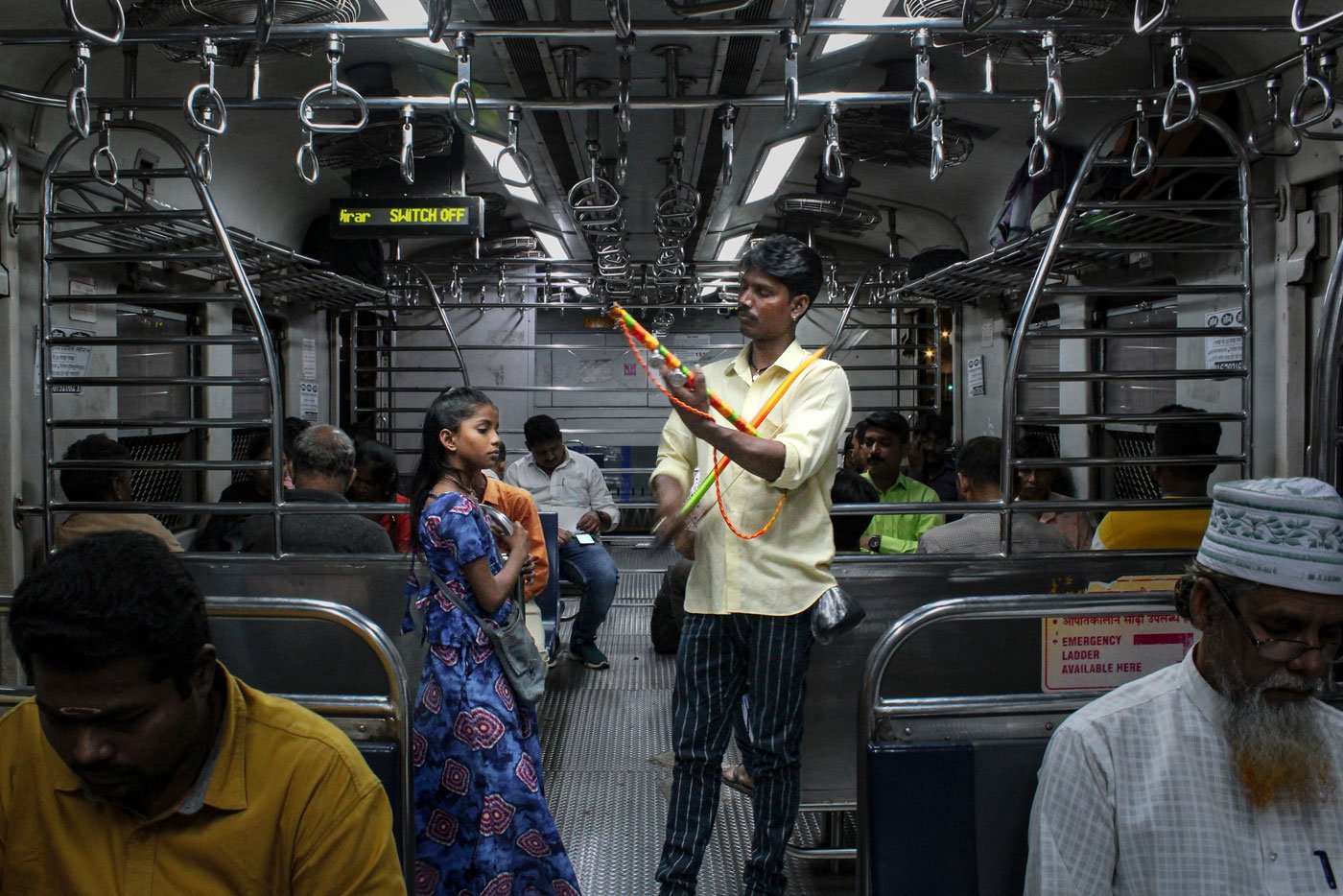
This photo is from Hanging by strings on Mumbai locals , a story I wrote on sarangi player Kishan Jogi whose performance stage is a Mumbai local train. His six-year-old daughter Bharati accompanies him.
Theirs is a narrative that echoes the story of many performers who have crossed my path since childhood. I have seen them, heard them, but never acknowledged them as an artist. And that is why it became important for me to do this story.
The photo was shot against the intense rhythm of their journey, hopping from one carriage to another within the crowded confines of moving trains.
Breathless with their swift pace, I had to also figure out where to place myself even as Kishan bhaiyya seamlessly moved into his performance space; as he switched from one compartment to the other, his music remained constant.
Gazing at him through my viewfinder I initially thought that he would hesitate and become conscious of having the camera around, but I was wrong – the artist was consumed by his art.
The energy of his art was infectious, and starkly contrasted with the worn-down commuters he was among. I tried to bring that duality to this photo.
*****
Binaifer Bharucha in West Kameng, Arunachal Pradesh
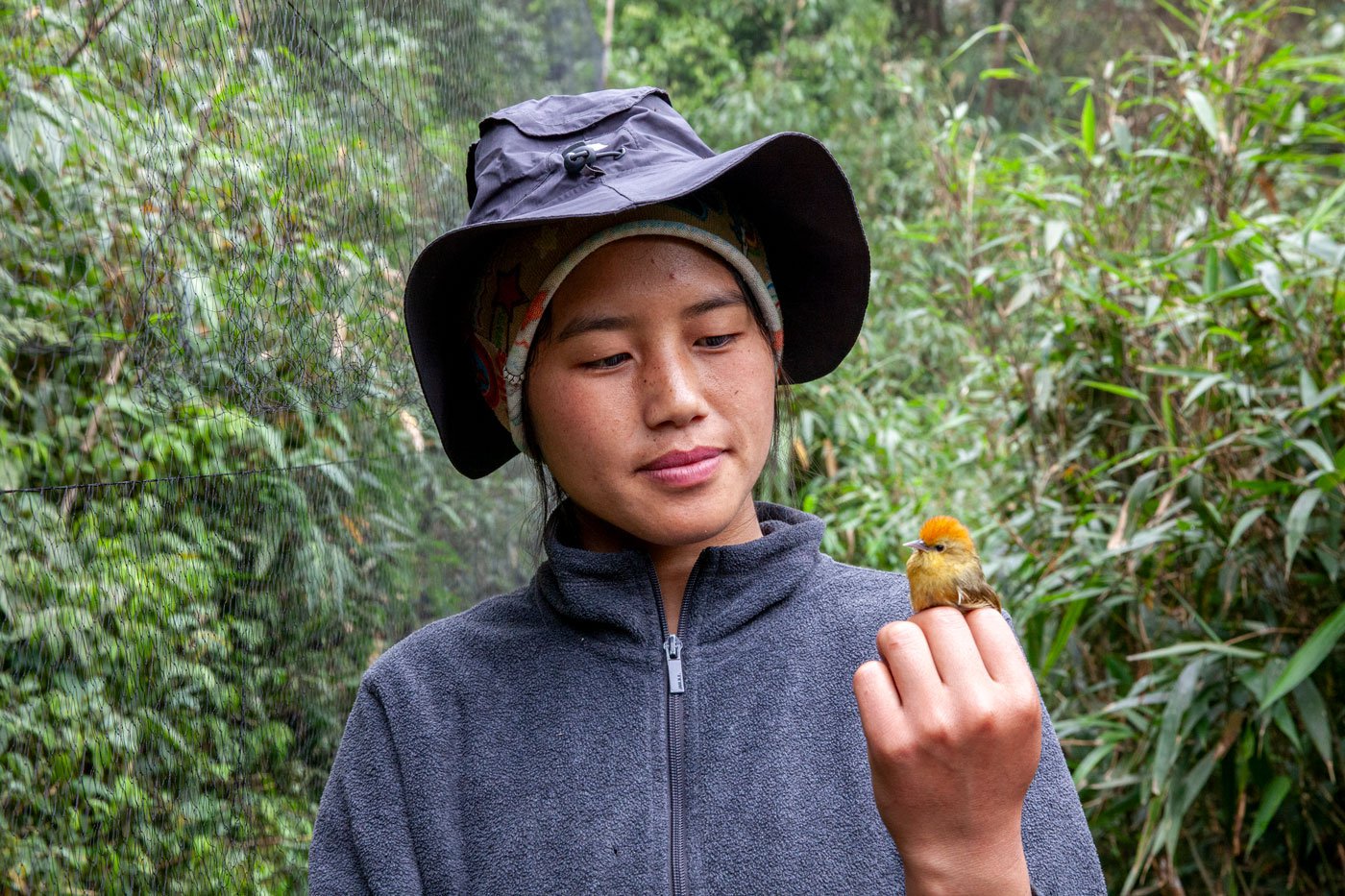
I shot this photo for the story, Arunachal’s birds: canary in the coalmine .
Scrambling behind Aiti Thapa (in picture), up and down snake-like paths bursting with lush vegetation, sliding on slippery mud, hoping leeches would not get me. Bird calls punctuated the silence. We were at Eaglenest Sanctuary in Arunachal Pradesh, for a story on climate change.
Since 2021, Aiti has been a member of a research team studying bird species here. Birds are caught in mist nets set up by the team in the forest. Gently untangling and extricating them is daunting, but she does it swiftly, yet cautiously.
My heart skips a beat as I am able to capture Aiti looking tenderly at the delicate frame of the Rufous-capped Babbler: a moment of connection and trust between human and birds in the midst of nature is magical. She is one of only two local women working in conservation in a predominantly male team.
Aiti stands strong
and gentle, quietly breaking barriers of gender, making it a very significant
image for the story.
*****
Deepti Asthana in Ramanathapuram, Tamil Nadu
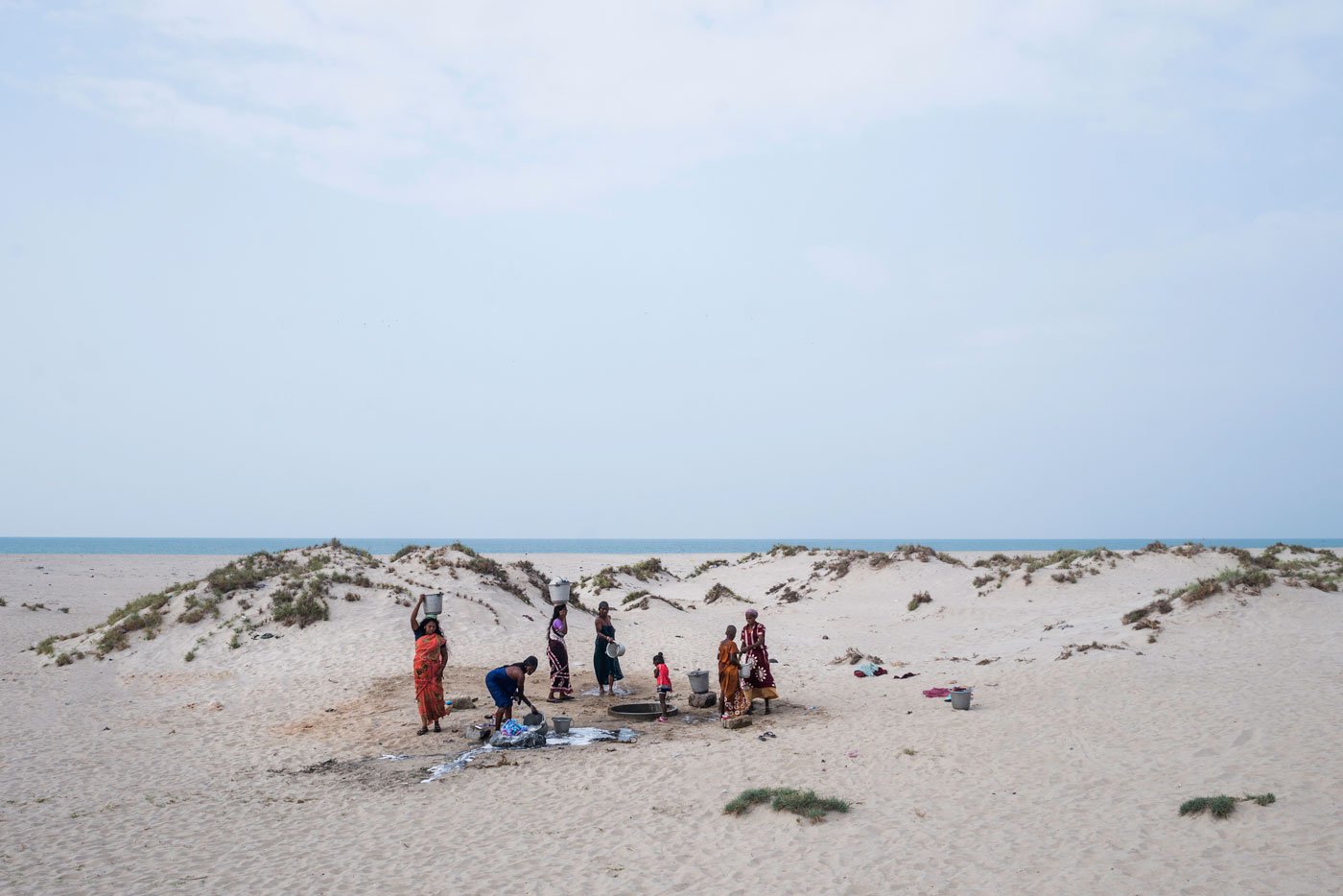
Dhanushkodi is just 20 kilometres from Rameswaram, a pilgrimage town in Tamil Nadu. With the Bay of Bengal on one side and the Indian Ocean on the other, it is a small sliver of land jutting into the sea – a spectacular one! People fish in the Bay of Bengal for six months of summer, and when the wind changes, they switch to the Indian Ocean.
I realised that there is an acute water crisis in the region a few days after I arrived to do the story, Broken bow: Dhanushkodi's forgotten people
Surrounded by oceans on both sides, availing fresh water everyday is a challenge. Often, women dig holes with their hands to fill their utensils with water for daily use.
And this is a recurring cycle, as the water gets saline very quickly.
This picture shows a
group of women against the vast landscape which makes it visually interesting.
At the same time it shows the lack of basic needs of life which is every
human’s right.
*****
Indrajit Khambe in Sindhudurg, Maharashtra
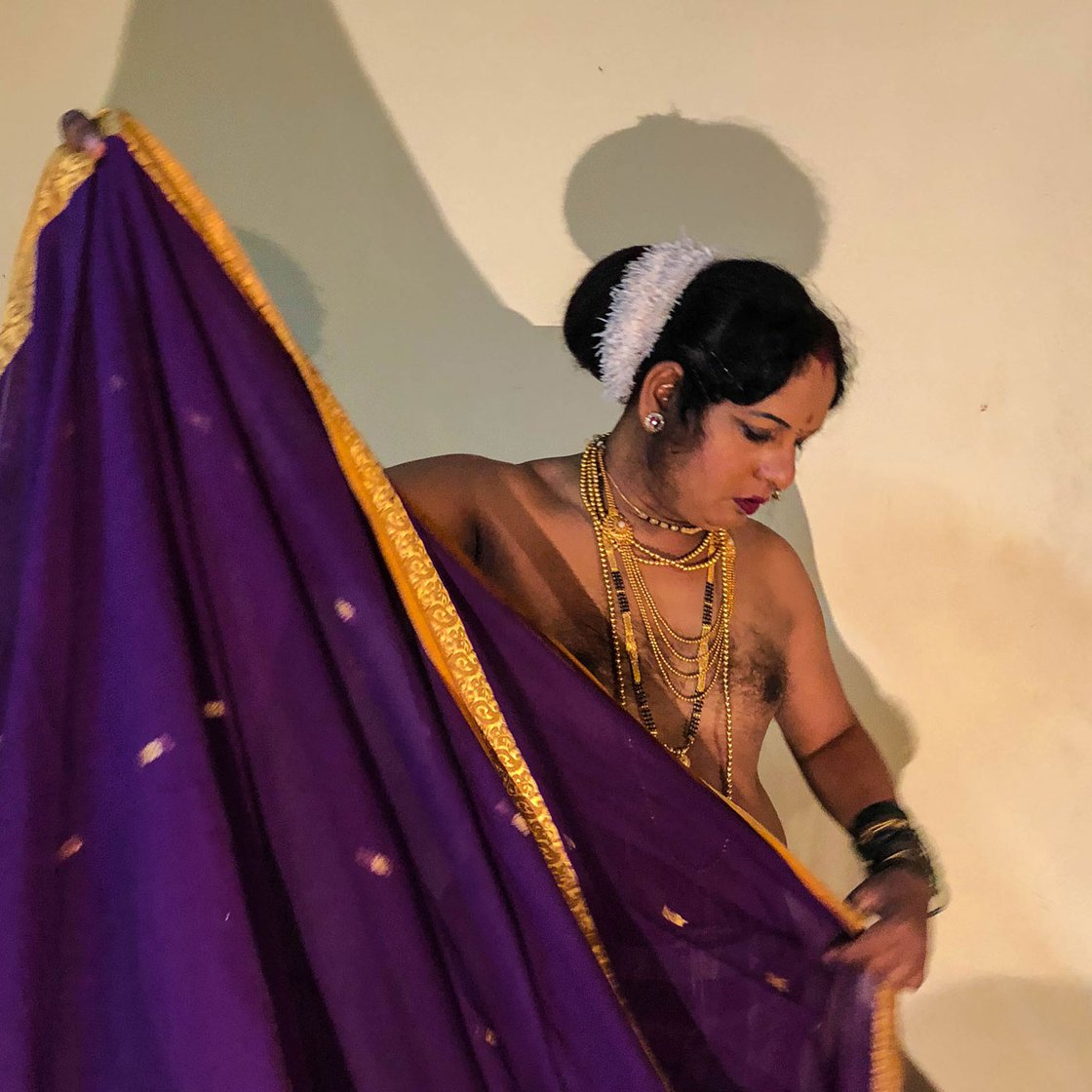
Omprakash Chavan has been performing a female character in Dashavatar theatre for the last 35 years. With more than 8,000 plays behind him, he is one of the most well-known actors of the art form. He keeps the glamour of Dashavtar alive for his audience as you can see in my story: A rich night of Dashavatar improvisations
I have been documenting him for more than a decade, and wanted to take one iconic image to tell his story. I got this opportunity when he was performing in Satarda a few years back. Here (above) he is seen getting ready as a female character for a play.
In this photo, one
can see him in both his avatars. This single image speaks about his legacy as a
man performing a female role.
*****
Joydip Mitra
in Raigarh,
Chhattisgarh
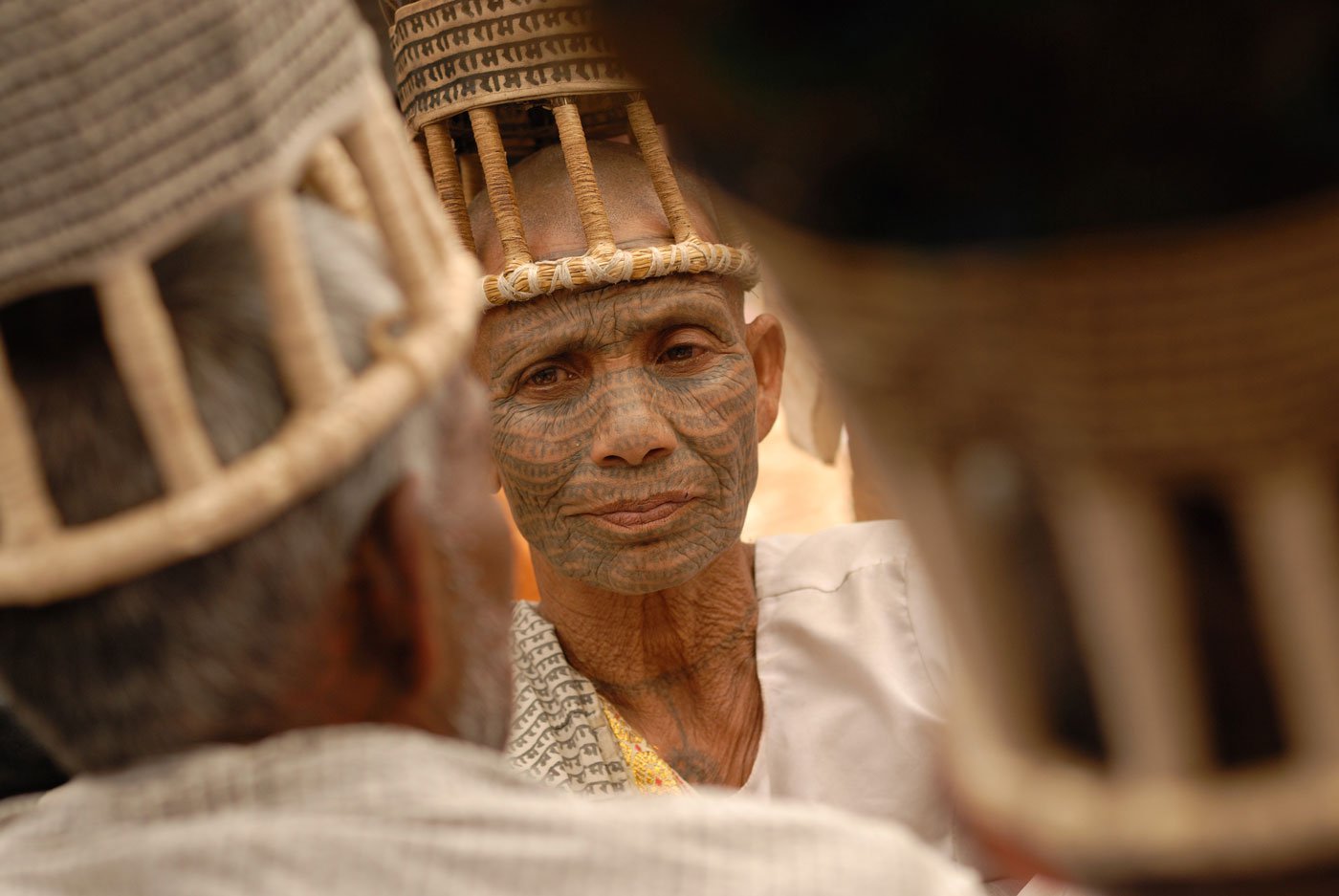
I read Rapt in the Name by Ramdas Lamb right at a time when a diametrically opposite interpretation of Ram – constructed by the Hindu right-wing over decades – was winning over India.
So I immediately set out in search of an alternative to this majoritarian narrative, which led me to the Ramnamis. For years then I tried to become a part of them by knowing them intimately.
This picture from In the name of Ram is a representation of those subalterns who could have prevented India from sliding down to its present form, had they been empowered.
*****
Muzamil Bhat in Srinagar, Jammu and Kashmir
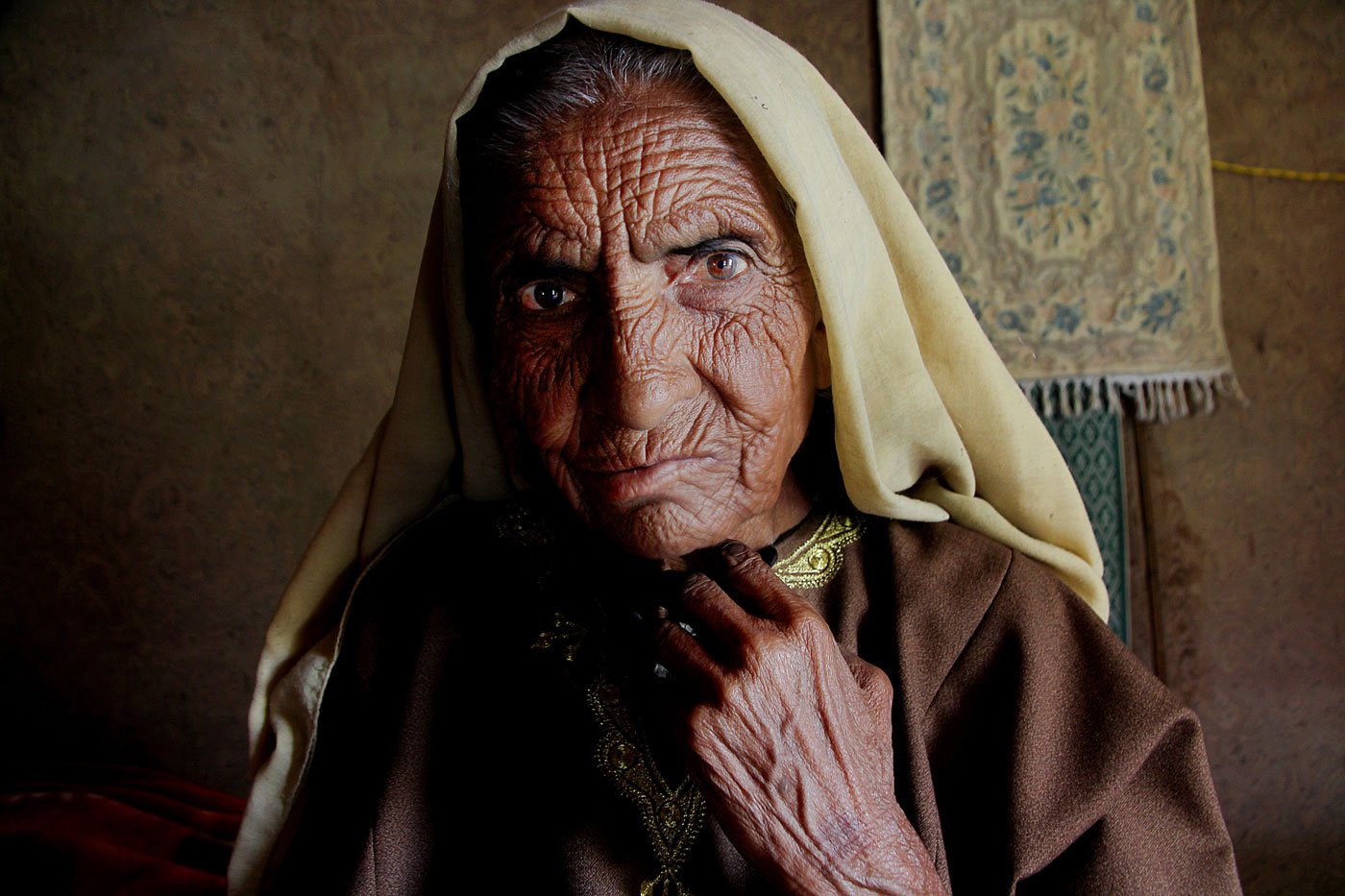
This portrait of Jiger Ded’s face is important to my story, The sorrows of Jigar Ded , because it tells us a lot about her life.
I found out about Jiger Ded from a local newspaper which wrote about her struggle during the covid-19 pandemic. I was eager to meet her and know her story.
When I went to her houseboat on Dal lake, she was sitting in the corner in deep thought. I continued to visit her over the next 8-10 days. She told me about her struggle living alone for the last 30 years.
The biggest challenge that I faced while doing her story was that I had to constantly repeat things as she was a patient suffering from dementia. It was hard for her to remember things and sometimes to recognise me.
This is my favourite
photograph because it captures the wrinkles on her face. For me each wrinkle
tells a story.
*****
Palani Kumar
in Thiruvallur, Tamil
Nadu
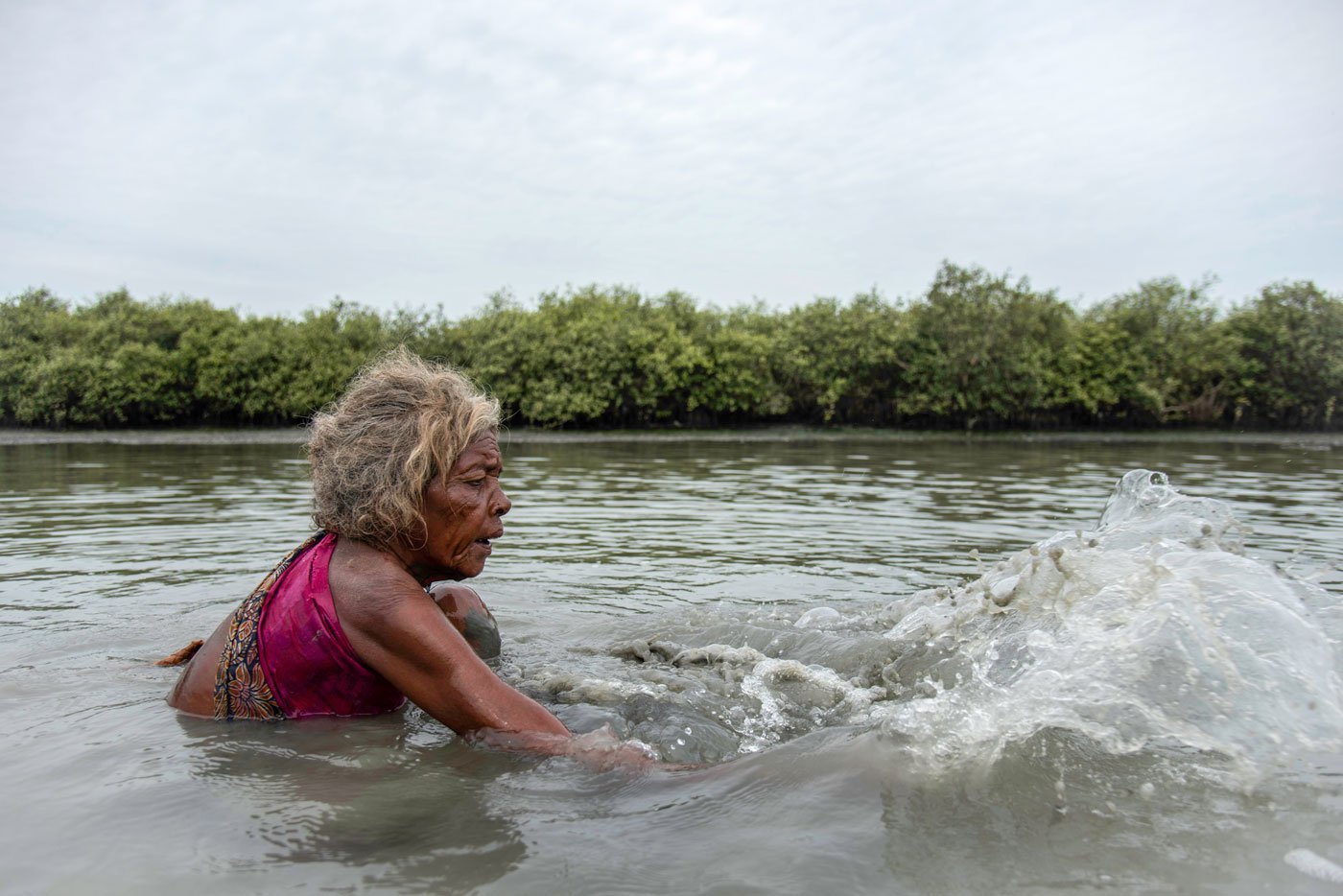
Reporting on Govindamma was a long-term project. I spoke to her for 2-3 years, before lockdown and then after. I shot three generations of her family – Govindamma, her mother, her son and her granddaughter.
When my story, Govindamma: ‘I have been in water all my life’ , was published, since it is about environmental issues in north Chennai, people started sharing the story widely.
The Thiruvallur (also spelt Tiruvallur) Collector handed out pattas [land ownership documents], and people were given pensions. Along with that new houses were built for them. That's why this photo in the story is an important one for me. It took matters to the next level.
You could say that
this is a life-changing photo for me.
*****
Purusottam Thakur in Rayagada, Odisha
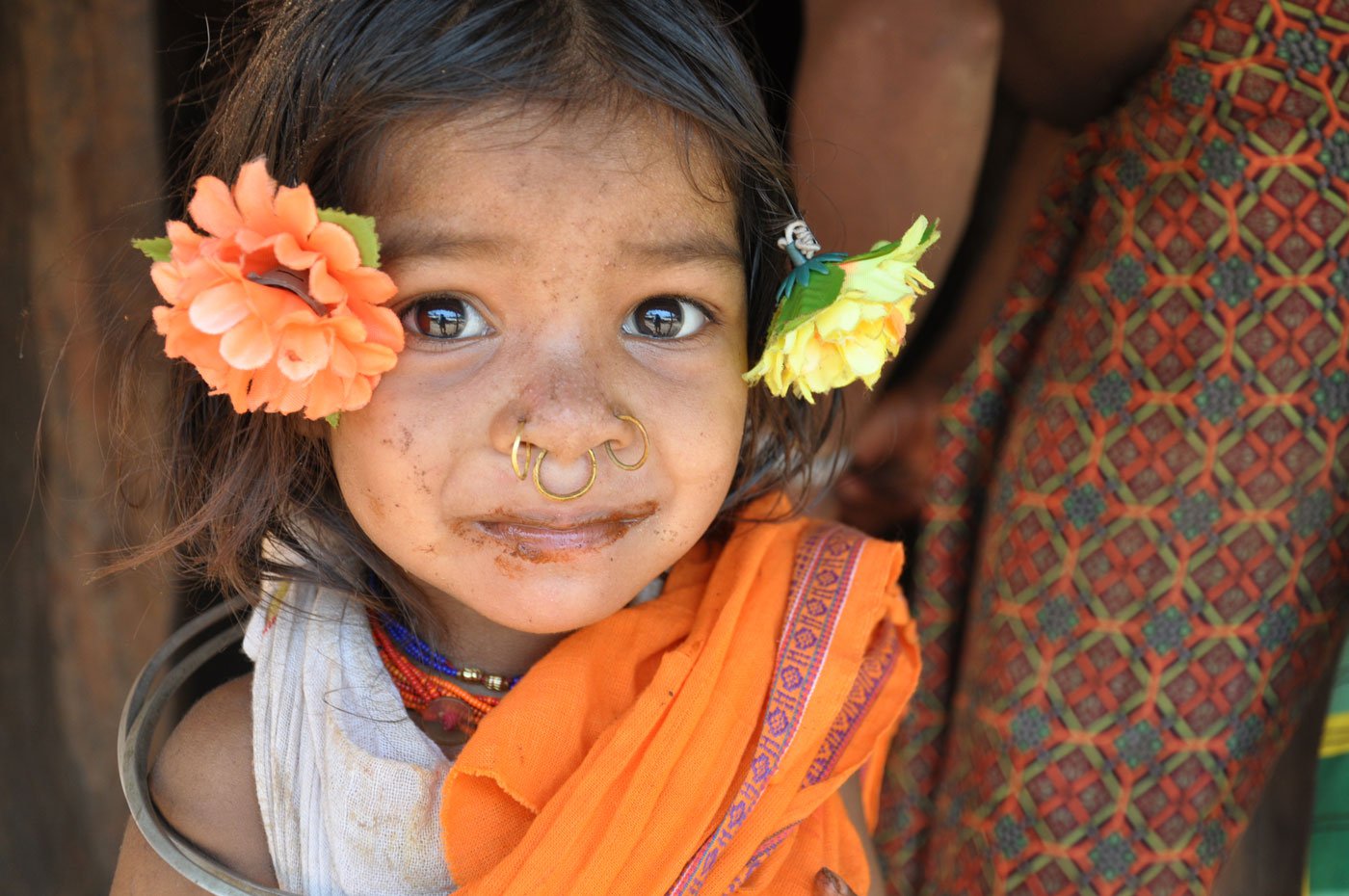
I met this little girl, Tina when I was reporting my story, A wedding in Niyamgiri . She was participating in the marriage ceremony. When I took this photo she was standing in front of her verandah of a mud house with her father.
The girl was brushing her teeth with gudakhu [paste made of tobacco and rotten jaggery]. I liked how she was comfortable being photographed.
This photograph also reminds me of the Adivasi’s philosophy. It also shows their struggle to preserve not only their own land and Niyamgiri hill, but also the entire biodiversity around them which they depend on for their socio-cultural and economic life.
It is a message to the world about how important this is for human civilization.*****
Rahul M in East Godavari, Andhra Pradesh
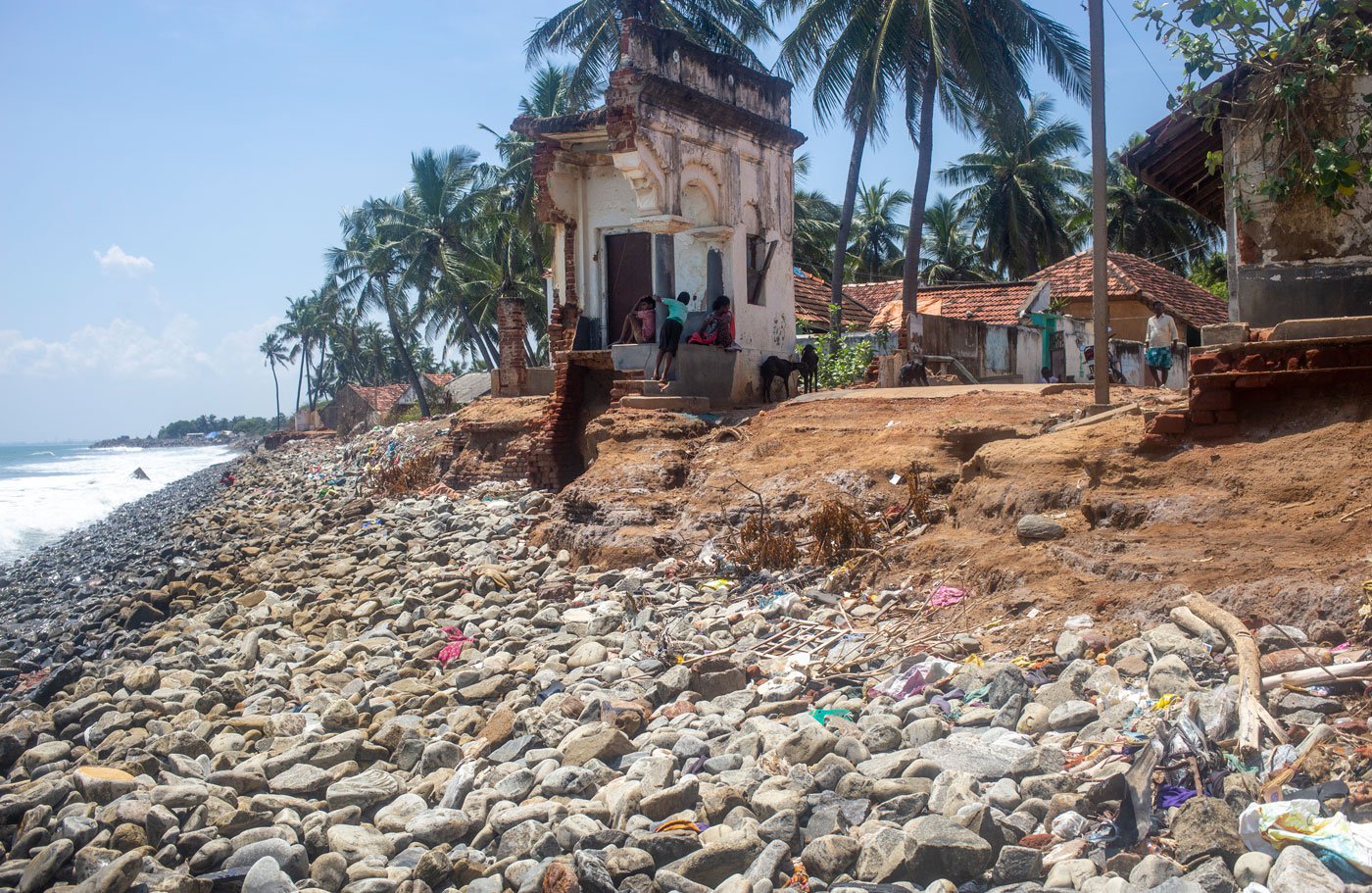
I took this photo in 2019 for my story, 'Oh, that house? It’s in the sea now – there!' I wanted to remember the way the fishing colony in Uppada had once looked.
While searching for stories about climate change, I realised that there are already many on rising sea-levels affecting villages. The demolished building to the left of the photo had a pull on me and gradually became the subject of my photos and the story itself.
It was once a gloriously noisy building. The family which moved into the building 50 years ago are now scattered across the street next to it. Nearly everything that was old in Uppada had been taken in by the sea.
I thought that the building's turn might be next, and many said it too. So I kept revisiting the building, taking pictures of it and interviewing people about it. And the sea eventually came for the building in 2020, faster than I imagined.
*****
Ritayan Mukherjee
in South 24 Parganas,
West Bengal
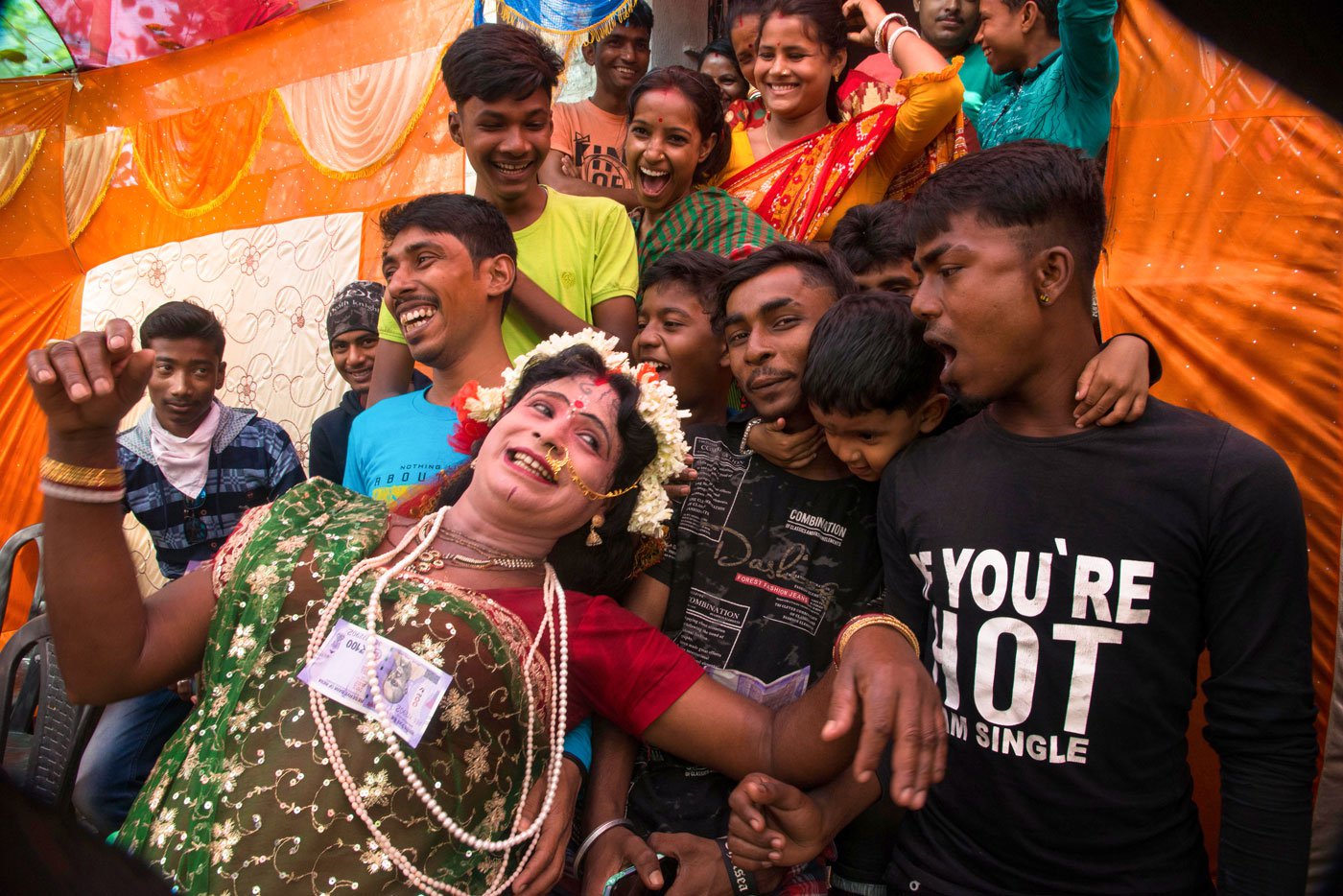
Nityananda Sarkar's skills delighted the wedding guests in my story, In the Sundarbans, a tiger-shadowed wedding , and I wanted my photos to show that.
Here in Rajat Jubilee village, the family celebrates a wedding amid memories of the bride’s father, Arjun Mondal, whose death in a tiger attack in 2019 here in the Gangetic delta, left the family struggling with sorrow.
A farmer and artist, Nityananda performs folk art forms such as Jhumur songs, Ma Bonbibi plays, and pala gaan . He is a 53-year-old farmer who and veteran pala gaan artist practising this art form for over 25 years. He works with more than one team for different shows.
*****
Riya Behl
in Mumbai,
Maharashtra
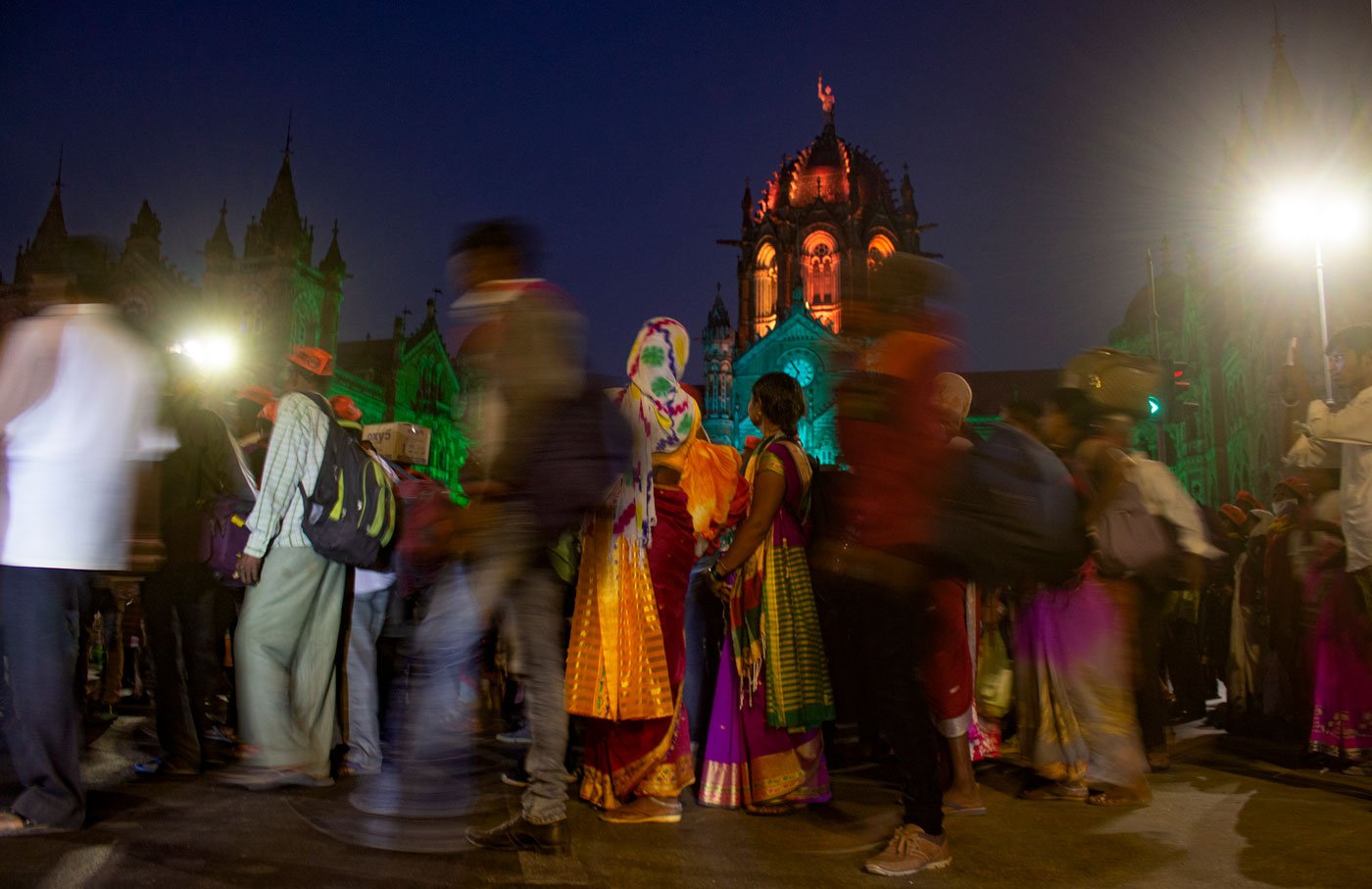
On 24 January, 2021, tens of thousands of farmers from all over Maharashtra assembled at Azad Maidan in south Mumbai, for a two-day sit-in organised by the Samyukta Shetkari Kamgar Morcha. I wrote about it in my story: Mumbai farm sit-in: 'Take back the dark laws'
I had reached the area earlier that morning and contingents of farmers had already started streaming in. All of us reporters were waiting for a tip-off on when this big group arrived in the evening though, hoping to be ready for the best shots. Photographers were standing on dividers, other vehicles and in all possible vantage points – depending on the lens they had – squinting to see when the large sea of farmers would flood the narrow road and enter the Maidan.
It was the first time I was on assignment with PARI, amply aware that there would be less than 5 minutes to get the photograph that might make it to the published piece. It was crucial to position myself correctly. But the city didn't make it tough, because right opposite us, the Chhatrapati Shivaji Terminus, a historic railway terminus, was lit up in bright yellow, blue and green. I knew this was going to be my backdrop.
Suddenly, the street
was filled with farmers marching past me briskly, many in their red AIKSS caps.
This is my favourite photo because it brings out a quiet moment between two
young women, for whom it is perhaps their first time in the city, stopping to
take it all in. They have spent the day in transit, carrying heavy bags and
food; and in their pause are slowing down the pace of this larger group, who
are also probably exhausted from the travel and want to settle down at the
Maidan soon. But the women take a second for themselves anyway, and I was lucky
enough to bear witness.
*****
P. Sainath in Rayagada, Odisha
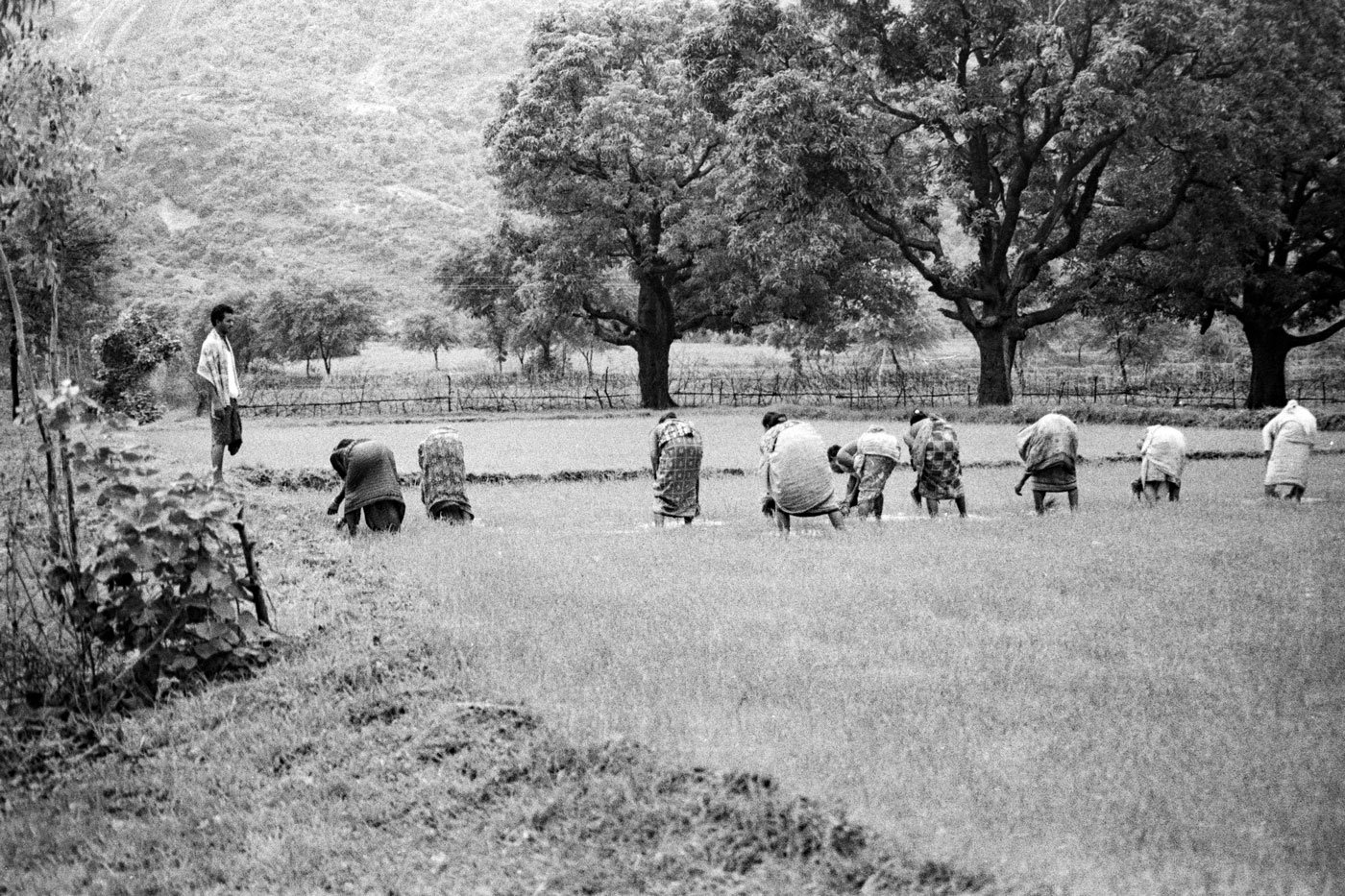
The India Photo.
The landowner was proud to be photographed. Standing tall, while a row of nine women workers doubled over, doing transplantation work in his field. He was paying them 60 per cent less than what he should have been for a day's work.
The 2001 Census was just out, and India's population had just crossed the nine-figure mark for the first time. And we were looking at India's multiple realities at a glance.
The male landowner stood tall and proud. The women doubled over in the field. Ten per cent of all those present stood upright and confident. And 90 per cent bowed down to the ground.
Through the lens they looked like a '1' followed by 9 zeros. That is 1 billion - that is India.
*****
Sanket Jain in Kolhapur, Maharashtra
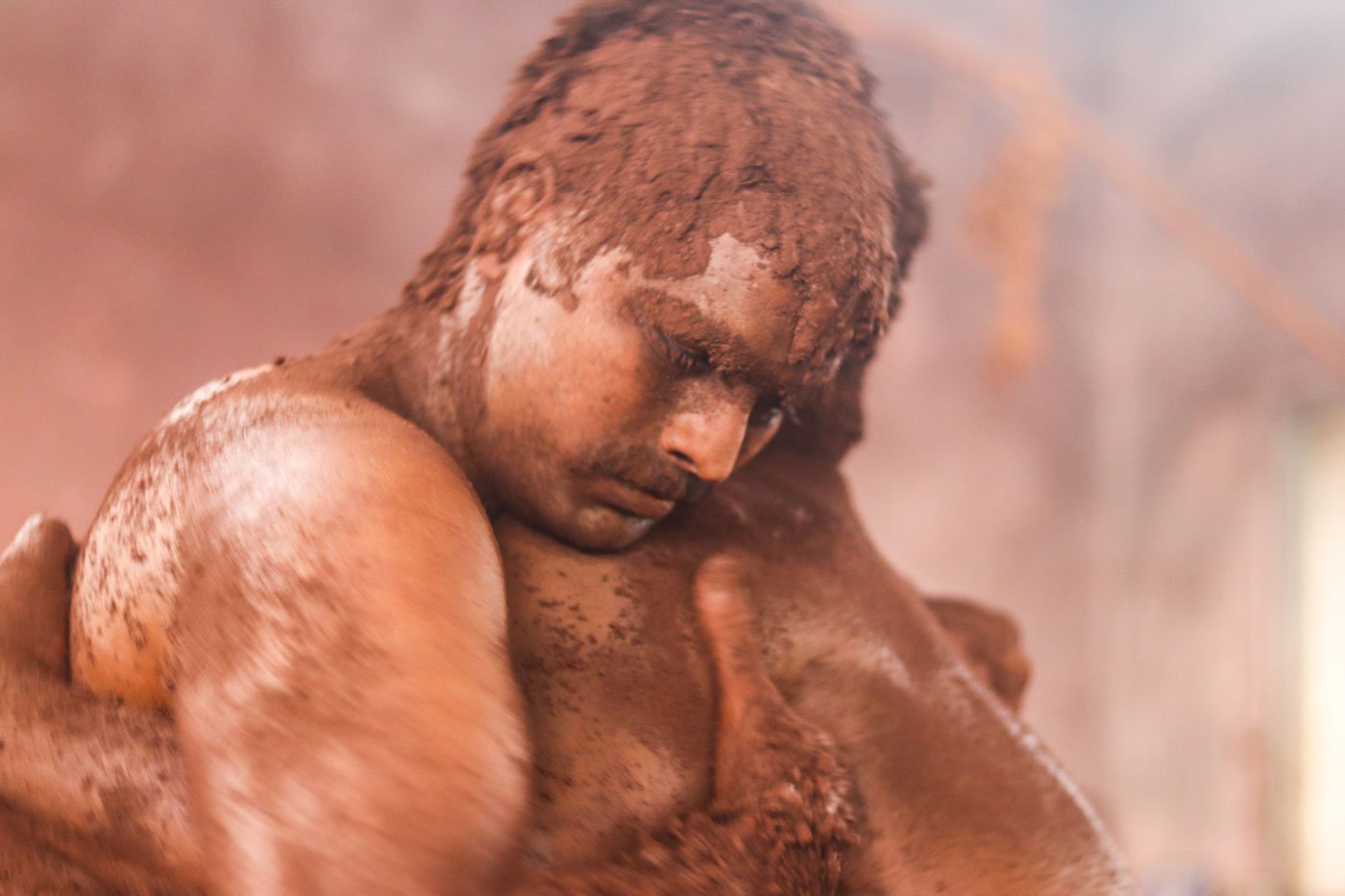
This photo is from my story, In Kolhapur: wrestlers’ diets, weighty problems .
During any bout or training session, wrestlers remain highly focused, monitoring their opponent’s moves and deciding how they will defend or attack within a fraction of a second.
However, in this photo, wrestler Sachin Salunkhe looks lost and distressed. Recurring floods and COVID devastated the lives of rural wrestlers forcing them to pick odd jobs or work as agricultural labourers. The impact was so huge that despite trying to get back to wrestling, Sachin couldn’t focus.
This is how this
photo was shot, showing wrestlers in their actual state of worry, which is only
becoming more challenging because of the rising climate disasters.
*****
S. Senthalir
in Haveri, Karnataka
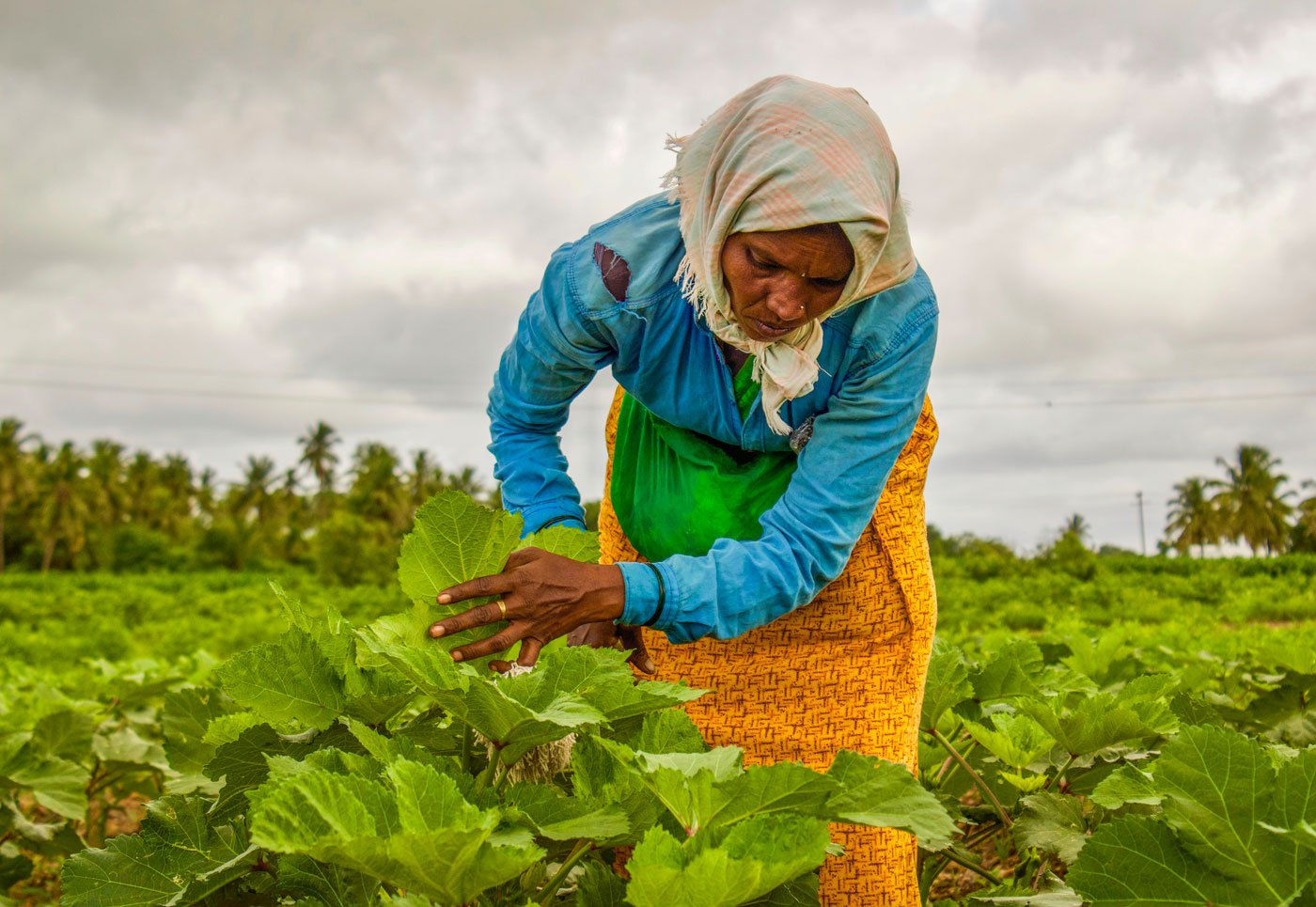
The first time I visited Ratnavva's house in Konantale village in Haveri district, was during the harvest season. Ratnavva was harvesting tomatoes, which were crushed after the harvest to remove seeds. These seeds were dried and sent to the huge seed producing companies in the district headquarters.
I had to wait another three months for the season when hand pollination actually begins. The women would start work early in the morning to pollinate the flowers.
I would follow her to the fields and walk for hours with her along the rows of plants to capture her work, documented in my story, In Haveri, Ratnavva's life of hopes and seeds
I had been visiting Ratnavva's house almost every day for over six months to gain her trust for this piece.
This is one of my favourite pictures because it captures her posture at work. This posture explains the hard work that goes in making hybrid seeds and how women perform these laborious tasks. She spends more than three to four hours at a stretch, bending down to hand pollinate the flowers, the most vital part in seed production.
*****
Shrirang Swarge
in Mumbai, Maharashtra
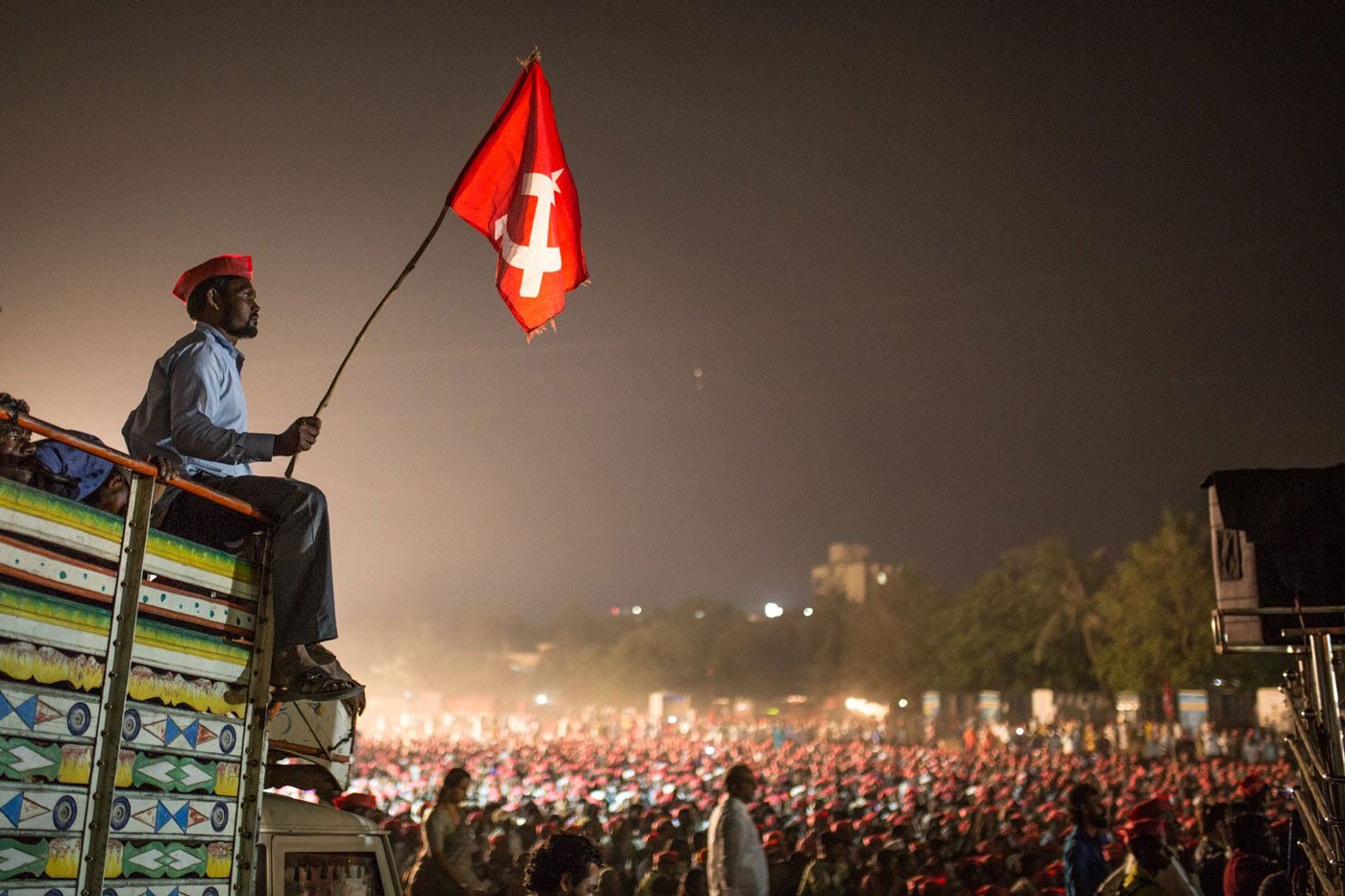
This photo shown in Long March: Blistered feet, unbroken spirit is my favourite from the farmers march as it encapsulates the spirit of the march and the story.
While the leaders were addressing the farmers, I noticed this farmer sitting on top of a truck waving the flag. I immediately moved across the truck and went on the main road to get to the sea of farmers sitting behind in my frame as I knew I may not get this frame if I waited too long.
The photo captures the spirit of the march. It
represents the story written by Parth quite well and shows a glimpse of the
unbroken spirit of the protesting farmers. The photo became a popular visual
from the march which was widely shared and published.
*****
Shubhra Dixit
in Kargil district, Jammu and Kashmir
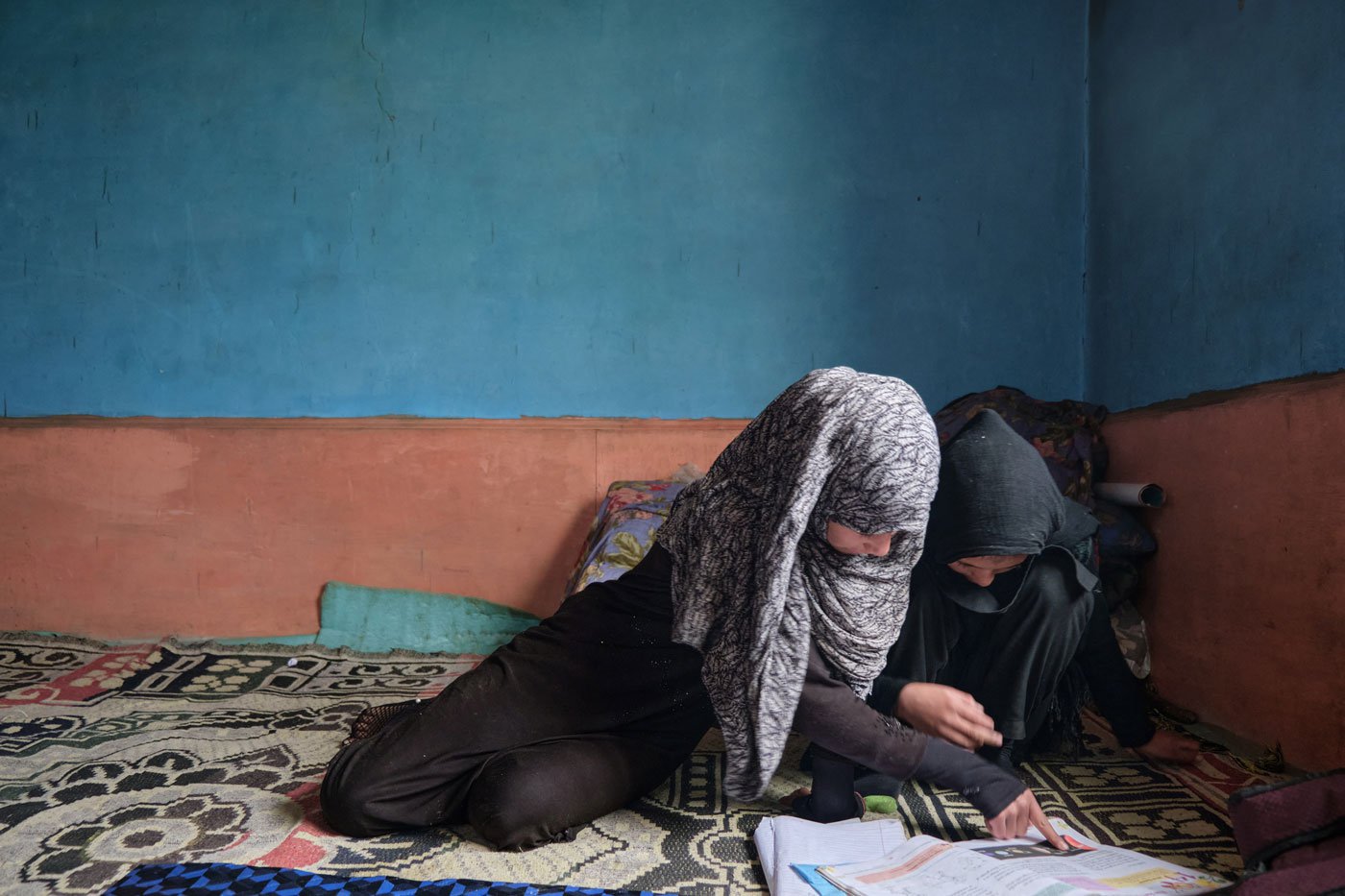
The language spoken in Taisuru, Purgi, is not the medium of instruction in school. The languages taught in school are English and Urdu. Both these languages are distant and difficult for the children, English text books more so. Not just the language but even the stories, the examples of everyday things are quite far removed from the lived experience of the people in this region.
In my story, Marking Muharram in Suru valley , Hajira and Batul who are generally not too interested in their textbooks, are learning about the solar system, engaging with their books on their own, curious and interested in learning about the planets, the moon, and the sun.
This was taken during the month of Muharram, so the
girls were dressed in black, and would leave for the Imambara together after
their studies.
*****
Smitha Tumuluru in Thiruvallur , Tamil Nadu
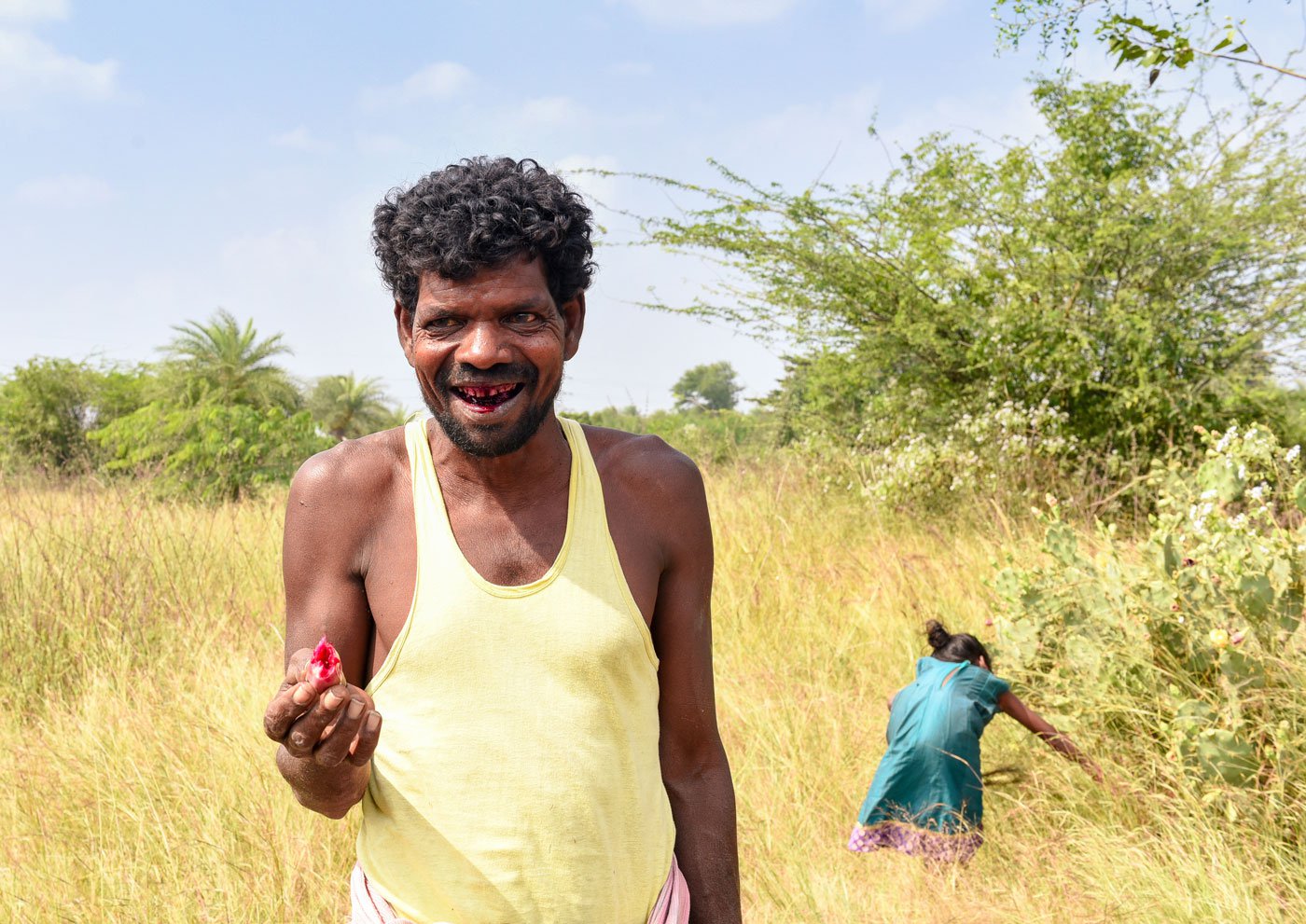
Krishnan took a bite into a juicy fruit and broke into a broad smile. His mouth was stained bright reddish-pink. Seeing him, all the children got excited and scrambled to look for this fruit. They gathered a handful of nadhelli pazham – not a fruit one gets to see in the markets. They called it the “lipstick fruit” for obvious reasons. We all took bites and shot selfies with our pink lips.
This image is from my story, Digging up buried treasures in Bangalamedu . It captures a lighthearted moment when a few Irula men and children went looking for the fruit in the scrub forest near their hamlet.
To me, the image is incomplete without the child in the background looking for the fruit among the cactuses and the tall grass. Children from the Irular community develop a deep understanding of the forests around them from a young age, which is what the story is about too.
The "lipstick fruit" moment will remain a memorable part of my field experience with the Irulas
*****
Sweta Daga
in Udaipur,
Rajasthan
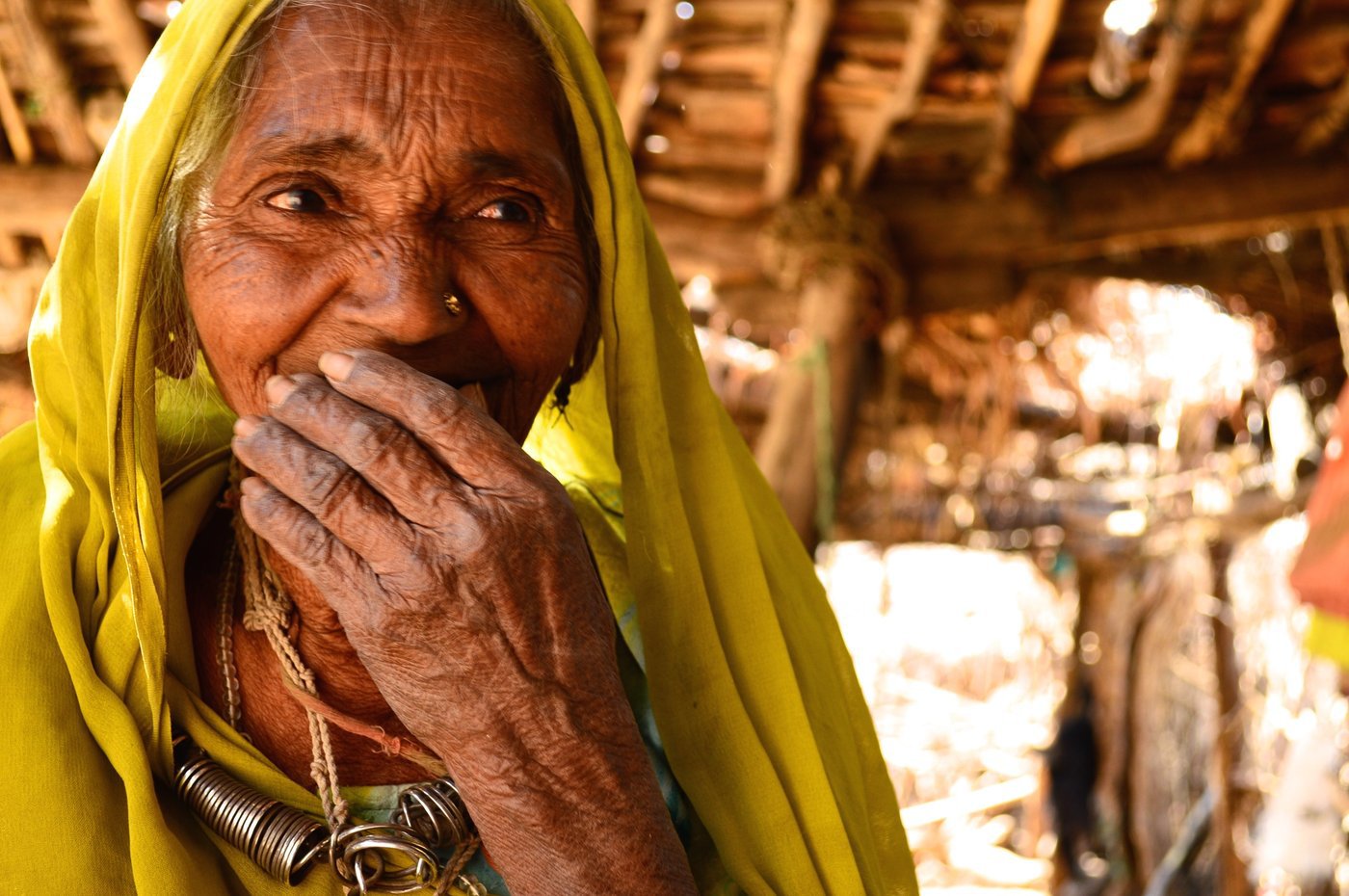
I was still learning how to take good photos, so I took many on this reporting assignment for my story, The Keepers of the Seeds
Now when I look back, I would do so many things differently, but that's the journey – without mistakes, you can't improve.
The
opening photo of Chamni Meena smiling is so eye-catching, I feel lucky to have
captured that shot, with that smile!
*****
Umesh Solanki
in Dahej, Gujarat
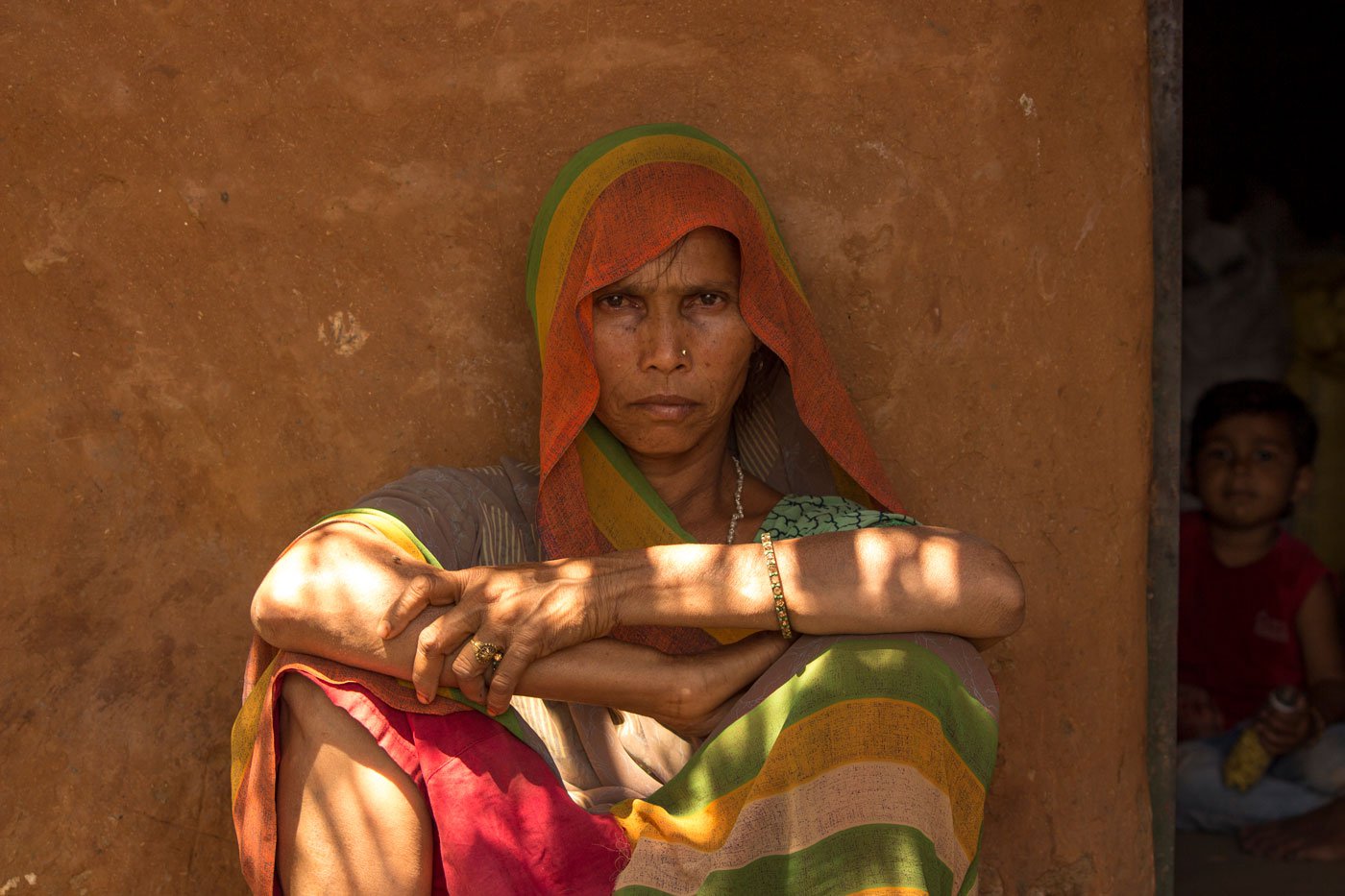
It was early April 2023. I was in Kharasana village in Dahod district of Gujarat. Three of the five young Adivasi boys had died while cleaning a toxic sewer chamber in this district a little more than a week ago. I was to meet the families and the survivors to work on the story In Gujarat: gassed to death in Dahej
I was to stay with the family of Bhavesh, one of the ‘lucky’ 20-year-old survivors, but also the one who saw three men die in front of his eyes, including his older brother Paresh, 24. After talking for a while with the men of the family, when I walked towards the house, I saw Sapna Ben, Paresh Katara’s mother, lying down right outside the mud house. She got up and sat, resting her back against the wall when she saw me. I asked if I could take a photograph. She gave a slight nod.
She looked straight
into the camera with eyes brimming with utter grief, vulnerability, and anger.
The shades of yellow that surrounded her seemed to capture the fragility of her
state of mind. This was one of the most evocative pictures I had taken. I
thought that I had said it all. It encapsulated the entire story of four
families in a single frame.
*****
Zishaan A Latif
in Nandurbar,
Maharashtra
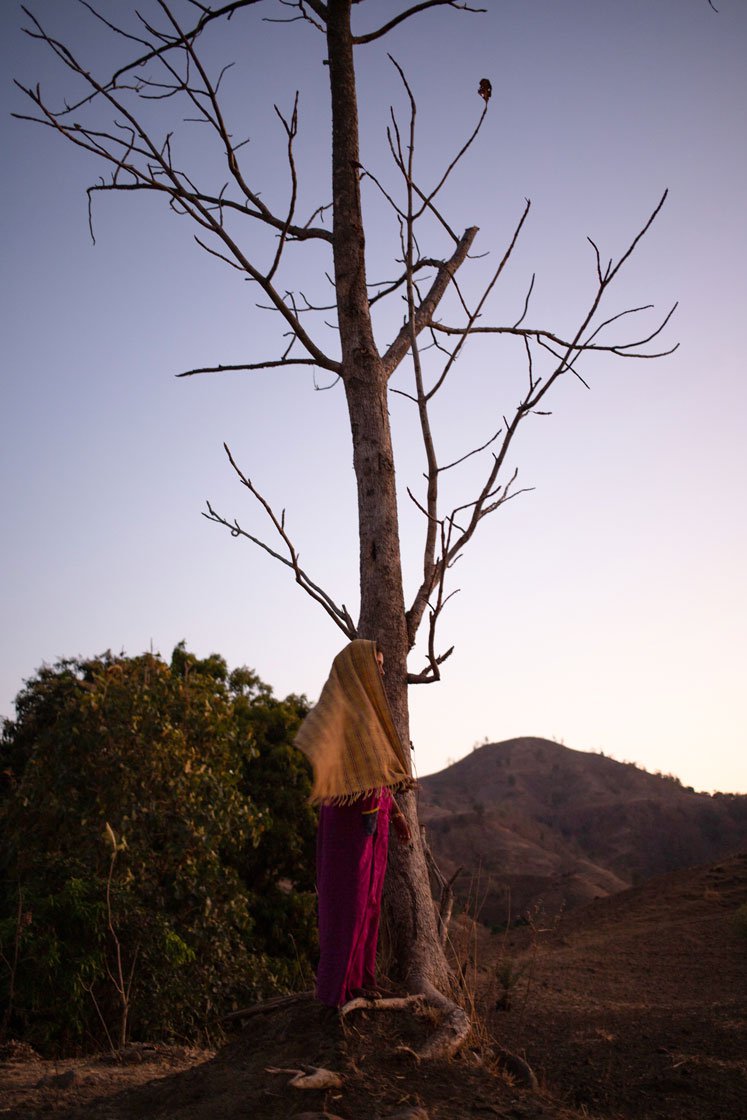
Pallavi (name changed) had a harrowing ordeal with an untreated prolapsed uterus. She had to endure physical pain that men would never comprehend. Her immense resilience was palpable when I photographed her inside her tiny hut in a hamlet of two thatched homes, perched upon a steep cliff. It typically takes two hours to reach the nearest government clinic that could treat her discomfort. Even that is a temporary and not a permanent solution. In this photograph for the story, ' My kaat [uterus] keeps coming out'
I shot her as she
stood, tall in her weakness, a symbol of a tribal Bhil woman, unwell but
continuing to provide warmth to their families and community.
Cover design by Sanviti Iyer.
